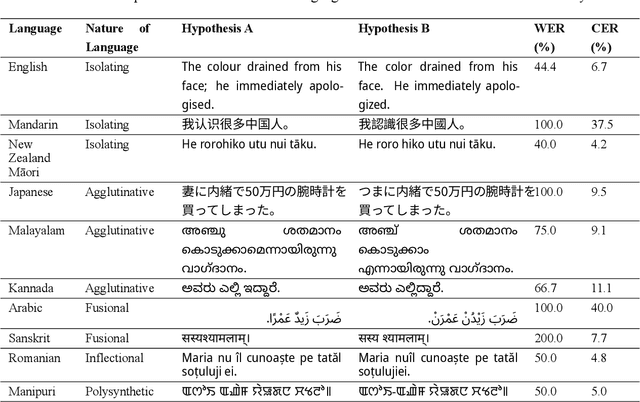Muhammed Ashraf K
Advocating Character Error Rate for Multilingual ASR Evaluation
Oct 09, 2024



Abstract:Automatic speech recognition (ASR) systems have traditionally been evaluated using English datasets, with the word error rate (WER) serving as the predominant metric. WER's simplicity and ease of interpretation have contributed to its widespread adoption, particularly for English. However, as ASR systems expand to multilingual contexts, WER fails in various ways, particularly with morphologically complex languages or those without clear word boundaries. Our work documents the limitations of WER as an evaluation metric and advocates for the character error rate (CER) as the primary metric in multilingual ASR evaluation. We show that CER avoids many of the challenges WER faces and exhibits greater consistency across writing systems. We support our proposition by conducting human evaluations of ASR transcriptions in three languages: Malayalam, English, and Arabic, which exhibit distinct morphological characteristics. We show that CER correlates more closely with human judgments than WER, even for English. To facilitate further research, we release our human evaluation dataset for future benchmarking of ASR metrics. Our findings suggest that CER should be prioritized, or at least supplemented, in multilingual ASR evaluations to account for the varying linguistic characteristics of different languages.
 Add to Chrome
Add to Chrome Add to Firefox
Add to Firefox Add to Edge
Add to Edge